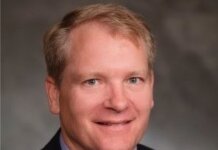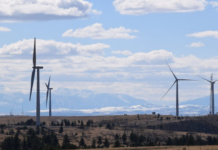Vancouver, British Columbia-based Alterra Power Corp. has completed financing for the Flat Top wind project, a 200 MW facility in central Texas. In turn, the project has been advanced to its final phase of construction.
A fund managed by BlackRock Real Assets has acquired a 49% sponsor-partner interest in the project and will co-own it with Alterra. Alterra will continue to own 51% of the sponsor equity.
Affiliates of Citi, Santander and the Royal Bank of Canada supplied the facility, consisting of a $217 million loan plus letters of credit totaling $71 million. The facility is secured by project assets and supported by a tax equity investor commitment.
In addition, subsidiaries of Berkshire Hathaway Energy and Citi have committed to a $221 million investment that will be realized when the project achieves commercial operations, subject to typical conditions precedent. The tax equity investment will retire the construction loan facility.
Lastly, Alterra has satisfied the final conditions precedent to funding its expanded loan facility with affiliates of AMP Capital Investors Ltd. The proceeds ($21.1 million gross) funded a portion of Alterra’s sponsor equity contribution for the project.
The wind farm is contracted to sell the majority of its power under a 13-year power hedge with an affiliate of Citi. Blattner Energy Inc. is already mobilized on-site and will provide services for the primary construction phase, while an affiliate of Vestas-American Wind Technology Inc. is supplying the project’s wind turbines.
The project is expected to achieve commercial operations in the first half of 2018. Alterra originally acquired the Flat Top wind project from Pioneer Green Energy LLC and Lavaca Wind LLC.
“We’re extremely pleased to have our Shannon financing partners join us again at Flat Top and to welcome a strong new partner in BlackRock,” states John Carson, Alterra’s CEO. “We anticipate that the Flat Top project will serve our stakeholders and the state of Texas well, delivering a large amount of clean power into a lesser-served portion of the state for years to come.”




